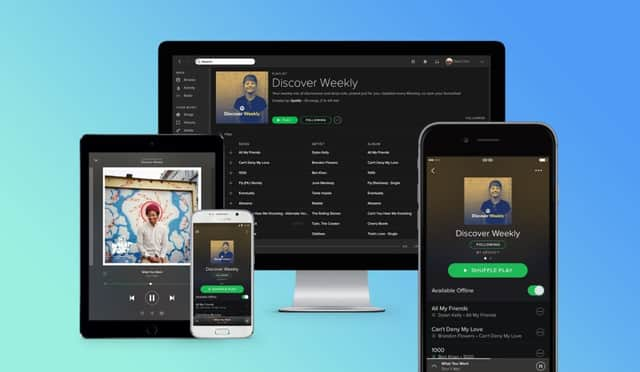The best free music streaming service might not be the one you think


When Google offers to play Mahler for you, it’s really inviting you to subscribe to its monthly streaming service. The same goes for Apple and Amazon, all of whom sell voice recognition pods which are programmed to promote their own products and which they are keen to place in your front room.
They do other things besides play tunes, but as Apple discovered with the launch of the original iPod two decades ago, music is where the money is.
Advertisement
Hide AdAdvertisement
Hide AdThat also explains why there are so many streaming services competing with each other. But you don’t need a pod to use any of them – and if you do have one, there is no reason to let it limit your choice of listening.
Apple Music differs from the company’s original offering, iTunes, because you pay per month, not per song. You also don’t download the music to your phone or PC but play it directly from a cloud.
This means that if you cancel your subscription, everything goes away. Even tracks that you physically downloaded in order to listen offline, will vanish from your library. It’s a completely different model to iTunes, which still allows you to keep digital files that you have purchased for as long as you want them.
iTunes and Apple Music do have one thing in common, though: the size of their library. With a shared catalogue of some 45m songs, they remain the most comprehensive services available,
Advertisement
Hide AdAdvertisement
Hide AdYet they are both playing catch-up with Spotify, the company that virtually invented the model for streaming music. Founded in Sweden in 2006, it has grown into a library of 35m titles, with an unrivalled facility to offer up songs you hadn’t thought of, alongside those you had.
What’s more, if you don’t mind adverts every so often, Spotify is free. And because it is so widely used, it’s accessible even from smart devices made by its rivals, Apple’s Homepod excepted.
The typical cost of an ad-free streaming service is around £10 a month, though both Spotify and Apple offer family bundles of five or six users respectively, for £15. Spotify’s independent rival, Deezer, also does this.
Assuming you have a collection of physical LPs and CDs that you have digitised over the years, a streaming service is a simple way to update and extend your library. Whether it’s something worth paying for depends on your listening preferences, but if you tend to play music at home rather than on the move, you may find you can live quite happily with Spotify’s free offering – especially as you can play it from your PC through your hi-fi speakers A good rule of thumb is to ask yourself how much you spent on physical music last year; if the answer is nothing, the new technology offers no compelling reason to change your habits now.
Advertisement
Hide AdAdvertisement
Hide AdAnyway, you may find that your tastes are freely catered for on YouTube. Individual uploaders, rather than record companies, have made it the world’s biggest juke box and though its owner, Google, has launched commercial spinoffs to monetise it, it remains for most of us, a gift. It’s brilliant for finding obscure recordings and it’s also the most accessible service out there, on smart TVs and set-top boxes as well as PCs and phones. So if your TV is already connected to a sound bar or amplifier, you might find it’s better than a hi-fi system.